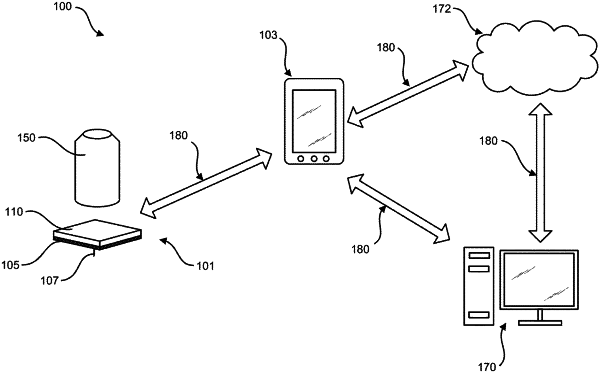| CPC A61B 5/1459 (2013.01) [A61B 5/0008 (2013.01); A61B 5/01 (2013.01); A61B 5/14514 (2013.01); A61B 5/14546 (2013.01); A61B 5/6832 (2013.01); A61B 2560/0443 (2013.01); A61M 5/14248 (2013.01); A61M 5/14276 (2013.01); A61M 2205/505 (2013.01)] | 13 Claims |

|
1. A wearable device for use in monitoring physiological changes in a patient, comprising:
a housing adapted to being secured to a patient's body, the housing comprising a needle which can be inserted into the patient subcutaneously or intravenously, and which is configured for fluid contact with a bodily fluid under a skin surface;
a chamber situated within the housing, the chamber comprising:
(i) a biological component, with a first membrane and a second membrane on either side of the biologic component, the biological component having a cell layer comprising cells, wherein the first membrane is a non-porous membrane on which the cell layer is pre-positioned, and wherein the second membrane is a porous membrane that allows for select fluid and nutrients to pass to the cell layer, and wherein the cells of the pre-positioned cell layer are adapted to respond to physiological changes in the bodily fluid by emitting fluorescence; and
(ii) an electronic component, wherein the electronic component comprises a light source for shining light onto the cell layer, thereby causing certain cells within the cell layer to emit fluorescence, wherein the emitted fluorescence, associated with the physiological changes, is an indication of blood pressure, ECG, heart rate, body temperature, gene and protein changes, local cellular changes that reflect systemic disease or change in health status, or combinations thereof;
and
a reader for detecting and/or decoding the emitted fluorescence from the cell layer to monitor physiological changes in the patient.
|